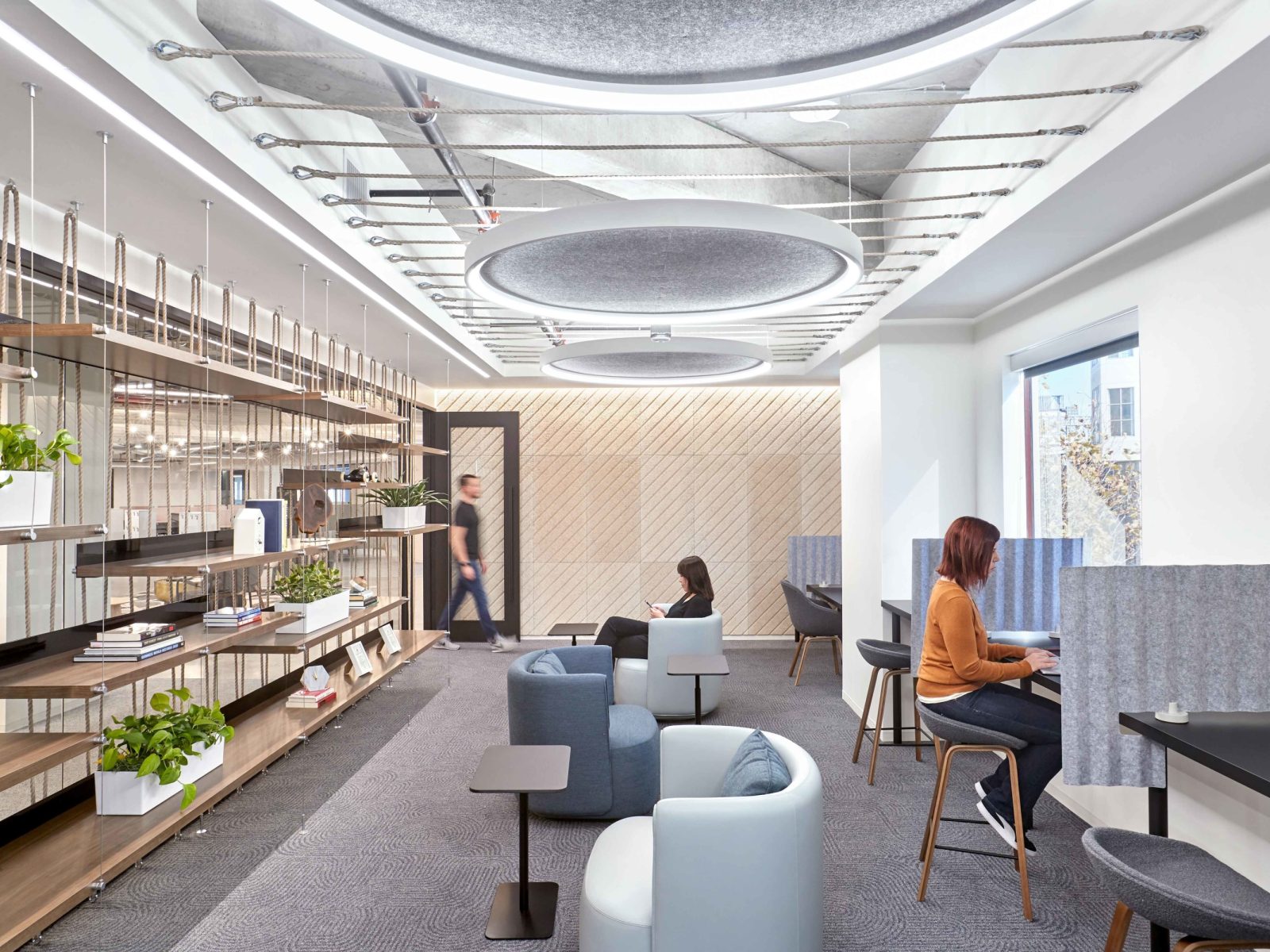Improve Teamwork in Healthcare Environments
Learn how healthcare settings designed to enable communication can improve clinician teamwork—and save lives.

Five Ways to Improve Teamwork in Healthcare Environments
Written by: Michelle Ossmann, PhD, MSN, Director of Healthcare Knowledge & Insight at Herman Miller
How healthcare settings designed to enable communication can improve clinician teamwork—and save lives.
Communication is essential for every successful team. But it's especially critical for clinical care teams in healthcare environments, where a quick conversation—or a simple misunderstanding—can mean the difference between life and death. This isn't hyperbole: medical errors are the third-leading cause of death in the United States(1), and 80% of “adverse events” (i.e. mistakes) are related to miscommunications among healthcare professionals.(2) Simply put, to reduce errors and save lives, we have to help care teams communicate.
We can start by setting nurses, doctors, and clinical teams up for success with workspaces that encourage communication and learning. When we design healthcare spaces to facilitate communication among care teams, we improve connectedness, continuous learning, and teamwork. This saves lives. Here's how to do it.(3)

Design Strategies for Improving Clinician Teamwork

1. Include a Variety of Settings
From confidential discussions to full-team updates to casual conversations, nurses, doctors, and other team members convey important information to one another in many different ways over the course of a shift. Whatever the interaction, including a variety of settings across the care team environment enables a diversity of communication styles—and increases worker satisfaction by 31.8 percent.(4)

2. Increase Conversational Transparency
Giving clinicians visual and auditory access across the team environment—the ability to see, hear, and even overhear each other—helps them engage in critical types of communication, such as intervening to correct a mistake or offering assistance to solve a problem. Care teams with visual and auditory access are more likely to offer support to their peers, share knowledge informally in conversation, provide feedback, and trust their teammates.(5)

3. Facilitate Chance Encounters
Important communication doesn't just happen in meetings. Nurses and doctors will tell you that some of the most valuable exchanges (e.g., critical patient updates, new test results) can occur while simply passing a teammate in the hallway. In fact, one study revealed that a startling 56 percent of all staff interactions are unplanned. Design must make room for these chance encounters and casual conversations in corridors and other shared spaces.(6)

4. Plan for Human-Scaled Work Areas
It's difficult to give care teams the right amount of space. But human-scaled environments that put staff in relatively close proximity to one another can help them be more efficient, increase informal learning through unplanned conversations, and even reduce the feeling that they're wasting time.(7)

5. Create Neutral Zones
The era of closed-door private offices is fading fast. And for good reason. Research shows that, when people from different disciplines work side by side, communication and team cohesiveness improve across the board. It also helps break down perceived hierarchies between groups and functions, enabling cross-functional engagement and knowledge-sharing. Nurses, doctors, and specialists who work together in the same space feel more comfortable sharing their opinions with each other—or starting a potentially life-saving conversation.(8)
Want to learn more?
Request to connect with a healthcare specialist.
Notes
1. Makary, Martin A., Daniel, Michael, "Medical Error—the Third Leading Cause of Death in the US," BMJ 2016;353:i2139.
2. The Joint Commission, "Human Factors Analysis in Patient Safety Systems," The Source, Volume 13, April, 2015.
3. Becker, "Organizational Ecology and Knowledge Networks," University of California, Berkeley, Vol. 49, No 2, 2007.
4. Leesman, "The World’s Best Workplaces 2018," Second Edition, May, 2019.
5. Sources include
Real, K., Bardach, S. H., & Bardach, D. R. (2017). The role of the built environment: How decentralized nurse stations shape communication, patient care processes, and patient outcomes. Health Communication, 32, 1557-1570. doi:10.1080/104 10236.2016.1239302.
Zhang, Y., Soroken, L., Laccetti, M., De Castillero, E. R., & Konadu, A. (2015). Centralized to hybrid nurse station: Communication and teamwork among nursing staff. Journal of Nursing Education and Practice, 5(12), 34-41. doi:10.5430/ jnep.v5n12p34.
Nanda, U., Pati, S., & Nejati, A. (2015). Field research and parametric analysis in a medical-surgical unit. Health Environments Research & Design Journal, 8(4), 41-57. doi:10.1177/1937586715577370.
Simon, M., Choudhry, N. K., Frankfort, J., Margolius, D., Murphy, J., Paita, L., et al. (2017). Exploring Attributes of High-Value Primary Care. The Annals of Family Medicine, 15(6), 529–534.
Liu, W., Manias, E., & Gerdtz, M. (2012). Medication communication between nurses and patients during nursing handovers on medical wards: A critical ethnographic study. International Journal of Nursing Studies, 49, 941-952. doi:10.1016/j. ijnurstu.2012.02.008.
6. Mejia, D., Favela, J., Moran, A., "Understanding and Supporting Lightweight Communication in Hospital Work," IEEE Transactions on Information Technology in Biomedicine 14(1), 140-146, 2009 https://dx.doi.org/10.1109/tit....
7. Sources include
Burton, M. C., Kashiwagi, D. T., Kirkland, L. L., Manning, D., & Varkey, P., "Gaining Efficiency and Satisfaction in the Handoff Process," Journal of Hospital Medicine, 5, 2010, 547-552. doi:10.1002/jhm.808.
Lewin, S., & Reeves, S., "Enacting ‘Team’ and ‘Teamwork’: Using Goffman’s Theory of Impression Management to Illuminate Interprofessional Practice on Hospital Wards," Social Science & Medicine, 72, 2009, 1595-1602. doi:10.1016/j.socscimed.2011.03.037.
8. Stroebel, R., Obeidat, B., Lim, L., Mitchell, J., Jasperson, D., Zimring, C., "The Impact of Clinic Design on Teamwork Development in Primary Care," Health Care Management Review, 2019, https://dx.doi.org/10.1097/hmr....
















